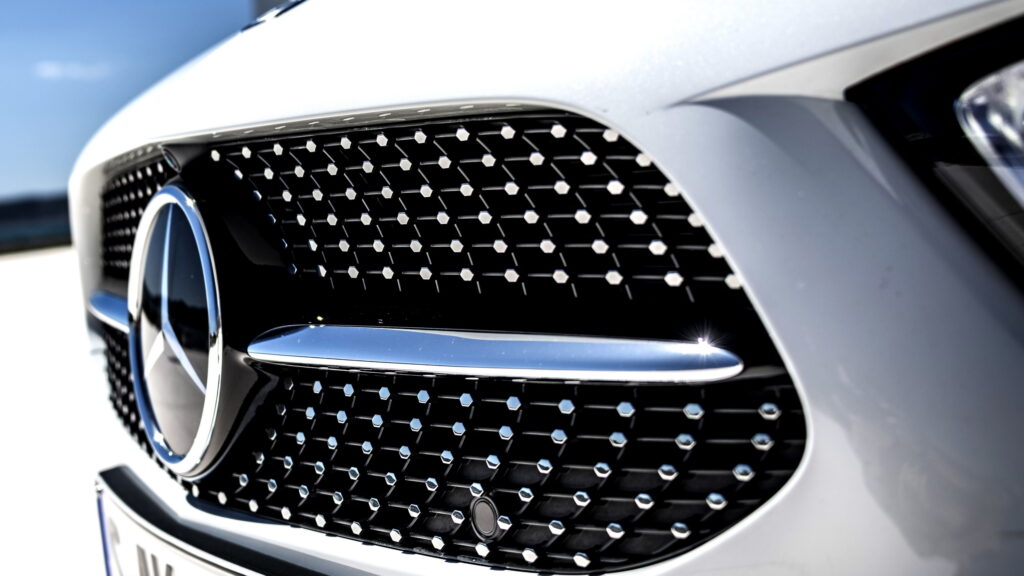
- Mercedes extends A-Class production to 2028 amid strong European demand.
- The compact model was set to end in 2026 but lives on due to its popularity.
- Production moves to Hungary to clear space for new MMA-based compacts.
Market demand has shifted the timeline for Mercedes, prompting the brand’s decision-makers to extend the life of the A-Class hatchback and sedan beyond initial expectations. Originally set to be discontinued in 2026, the two entry-level models will now remain in production until at least 2028 due to their popularity in Europe.
var adpushup = window.adpushup = window.adpushup || {que:[]};
adpushup.que.push(function() {
if (adpushup.config.platform !== “DESKTOP”){
adpushup.triggerAd(“0f7e3106-c4d6-4db4-8135-c508879a76f8”);
} else {
adpushup.triggerAd(“82503191-e1d1-435a-874f-9c78a2a54a2f”);
}
});
That said, there are no plans for an all-new generation. Instead, the upcoming CLA will take over as the new gateway to the Mercedes lineup.
More: Mercedes Sends Off Compact AMG Sedan With A Loud, Limited Goodbye
Mercedes’ head of production, Jorg Burzer, confirmed to Automobilwoche that the A-Class will stick around for longer than previously planned, though he would not commit to a specific end date. He described the move as the model’s “final run” and noted the sedan’s strong appeal in European markets.
Current Model Nears a Decade of Production
The fourth-generation A-Class (W177) debuted in 2018 and was refreshed in late 2022. If production continues through 2028, the model will reach the 10-year mark, a notable milestone in today’s fast-evolving compact segment. A second facelift is possible to keep it competitive with the BMW 1-Series and Audi A3, although the A-Class has already exited the North American market.
Despite the two-year extension for the A-Class, Mercedes still plans to phase out the B-Class minivan in 2026, aligning with its broader strategy to trim the compact lineup from seven models down to four.
Mercedes A-Class
According to Dataforce, the A-Class sold 27,772 units in Europe between January and May this year, a 15 percent drop compared to the same period last year. Even so, the figure remains strong enough to warrant keeping it in production for a bit longer. In contrast, the B-Class sold just 5,997 units during that time, reinforcing the diminishing demand for compact premium minivans in Europe.
var adpushup = window.adpushup = window.adpushup || {que:[]};
adpushup.que.push(function() {
if (adpushup.config.platform !== “DESKTOP”){
adpushup.triggerAd(“bb7964e9-07de-4b06-a83e-ead35079d53c”);
} else {
adpushup.triggerAd(“9b1169d9-7a89-4971-a77f-1397f7588751”);
}
});
Preparing for the Next-Gen of Compact Models
To make room for its future lineup, Mercedes plans to shift A-Class production from Rastatt, Germany, to Kecskemet, Hungary, for its final two years (2026–2028). Burzer explained that this move will “free up critical capacity needed to integrate MMA models” at the German plant.
More: Mercedes Can’t Keep Up With Demand For New Compact Sedan
The first of these next-generation compact vehicles is the new CLA, which has already made a strong market debut. Shortly after launch, Mercedes added a third shift to its assembly line to keep up with demand. Built on the Modular Mercedes Architecture (MMA), the CLA is currently available as an electric sedan, with internal combustion engine variants and a more versatile Shooting Brake version also on the way.
var adpushup = window.adpushup = window.adpushup || {que:[]};
adpushup.que.push(function() {
if (adpushup.config.platform !== “DESKTOP”){
adpushup.triggerAd(“b25ecba7-3bbb-4ea7-a3a8-dbea91695c07”);
} else {
adpushup.triggerAd(“e46c436a-adeb-4b5e-a2c7-56bc36561c10”);
}
});
The CLA will eventually be joined by redesigned versions of the GLA and GLB SUVs, which are currently in development. One upcoming addition stands apart: the baby G-Class. Unlike its compact siblings, it won’t be built on the MMA platform as Mercedes is aiming to preserve its off-road capability, keeping it in line with the rugged character of the full-size G-Wagen.